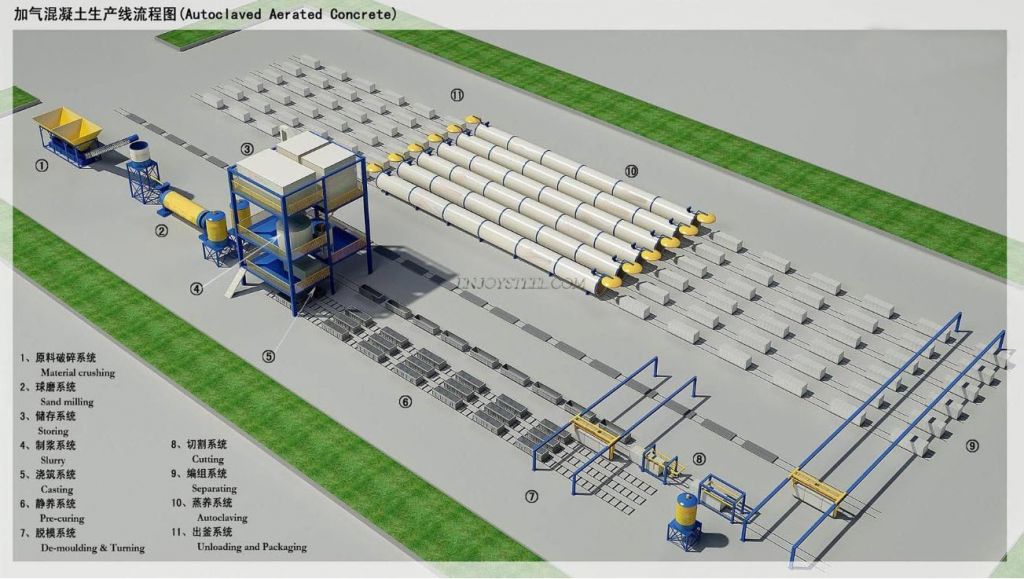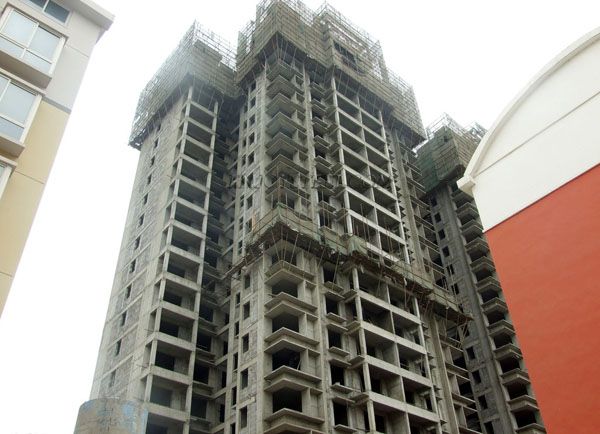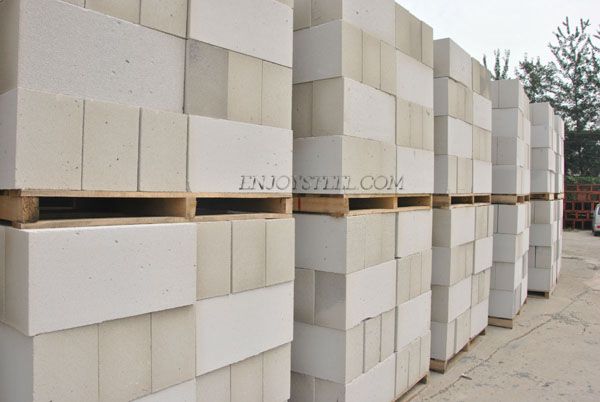

FOB Price
Get Latest Price|
1 Unit Minimum Order
Country:
China
Model No:
-
FOB Price:
Place of Origin:
-
Price for Minimum Order:
-
Minimum Order Quantity:
1 Unit
Packaging Detail:
-
Delivery Time:
-
Supplying Ability:
-
Payment Type:
L/C, T/T
Product Group :
Contact Person Fisher
819, Jintianyaju Business Building, 593 of Tongjiang Road, Changzhou, Jiangsu
AAC (Autoclave Aerated Concrete) Production Line
1. First,dose and match measured raw materials
2. After distributing,feed raw material into pouring mixer to make slurry
3. Through thoroughly mixing,the slurry is poured to mould
4. After pre-curing under a certain temperture and time,the block would reach a certain hardness prepare for cutting
5. Tilting hoister would turn over 90 degree of mould
6. Then open the mould and separate it from block,and take the block woth side plate ti cutting cart
7. The blocks then be cut through the cutter firstly of two vertical sides of block
8. Secondly the horizontal cutting
9. Finally the vertical cutting
10. After cutting,the block is hanged to trolly with side plate by semi-finished product hoister
11. Organizing the cut blocks and put them into autoclave
12. Hardending the blocks under certain temperture and pressure
13. Take finished products out of autoclave
14. The finished product hoister take the finished product to stock shield
15. Packed for loading
16. The side plate return back by side plate roller
17. Side plate would be organized with open mould
18. Clean the mould and preparing for next pouring
19. Steel bars processing line for slab production


Detail Introduction of Autoclaved Aerated Concrete
What is AAC?
AAC (Autoclaved aerated concrete) Concept Main
raw materials of AAC are siliceous material (sand, fly ash and
Silicon tailings) and Calcium materials (lime and cement) mixed
with foaming agent (aluminum powder). It is the product of light
porous silicate through the following processes: batching, mixing,
pouring, hardening, cutting, autoclaving and curing etc. Because of
large amount of well-distributed tiny pores after foaming, it is
named autoclaved aerated concrete.
AAC Classification
In general, it can be classified according to the types of raw
materials, manufacture process and functions. Based on
the shape of AAC products, it can be divided into: AAC
blocks and AAC panels. It is a revolutionary material offering an
unique combination of high durability and strength, low weight,
excellent heat insulation, fire resistant, noise absorption,
unprecedented build ability and superior ecological green features.
In China, AAC is one of the light wall materials which was
popularized and applied at the earliest and the most widely.
1. Low weight: holes gap:
70%~80%; volume density: 400~700kg/m3,1/4 of common cement ,1/3 of
fireclay brick and 1/2 air brick, able to float like wood, and to
reduce building weight and low building comprehensive construction
cost.
2. Fire resistant: well fire
resistance performance without harmful gas when fired; able to
resistant 700°,225mins for 100mm wall and 480mins for 200mm
wall.
3. Noise absorption: absorbing
noise with porous structure; 100mm can absorb 41 decibel.
4. Heat insulation: excellent
heat insulation with large amount of holes and micro pores;
coefficient of thermal conductivity: 0.11-0.16W/MK, 1/4-1/5 of
fireclay brick.
5. Anti-permeability: low
water-uptake for the materials consist independent pores
6. Anti-seismic: comparing to
fireclay brick, AAC can increase 2 seismic levels.
7. Ecological green: no
pollution during manufacture, transportation and application;
protect farm land, save energy and reduce consumption.
8. High durability: stable
strength
9. Easy workability:
unprecedented build ability offers advantages to construct
10. Economic: comparing to fireclay bricks, AAC reduces
5% comprehensive construction cost
AAC Application Non-load-bearing masonry is the most
widely produced and used with the volume density 500 kg/m3 and 600
kg/m3. It is mainly used as filler and partition without bearing
load. Load-bearing masonry, with the volume density 700 kg/m3 and
800 kg/m3, was used to undertake load after being specially
disposed in construction. Thermal-insulation block, with the volume
density 300 kg/m3 and 400 kg/m3, was mainly used for heat
insulation in buildings. Roof panel and wall panel is reinforced
AAC panel with different reinforced condition for different
purpose.
AAC Block Standards
Standard number: GB 11968-2006 Standard code: AAC
blocks
AAC Raw Materials
Abundant raw materials can be used to produce AAC, especially
flyash which is the ideal kind of wall material to take the place
of fireclay bricks, not only can it make use of industrial solid
waste, curb environmental pollution, protect farm land, but also
can create benefits to social effect and economic effect. Over
these years, it has been greatly supported by national
wall-revolution policy, tax policy and environmental policy.
1. Fly ash: the core raw
material of AAC product; the main resource of silica-aluminum
components; correspond with JC409-91
2. Cement: the strength
of fly ash AAC product mainly depends on cement which provides
calcium materials. The cement suits to the AAC product lying on its
type and label. Ordinary Portland Cement 52.5 should be first
choice. While considering the cost of production Ordinary Portland
Cement could also be a choice.
3. Lime: one of the main raw
materials of fly ash AAC; the main effect is to provide efficient
calcium oxide with cooperation of cement making calcium oxide react
with SiO2、Al2O3 in hot water then to produce calcium silicate
hydrate. Therefore, lime is also the main resource of strength.
Effective calcium oxide of lime should not less than 65%, over 80%
is perfect and should accord with JC/T621-1996.
4. Gypsum: Gypsum is the
foaming regulator in AAC which dispels quicklime and postpones
slurry’s densification.
5. Foaming Agent: There must be
foaming materials working as foaming agent making air holes to form
porous structure.
6. Foam Stability: After
foaming, the thin bubbles are easily breakup disturbed by other
things affecting AAC quality.
Typical Formula and Consumption of Fly ash AAC
Fly ash: content ratio 70%, consumption 350kg/m3;
Cement: content ratio 13.8%, consumption 25-30kg/m3;
Lime: content ratio 13.8%, consumption 140-150kg/m3;
Phosphogypsum: content ratio 2.96%, consumption
15kg/m3; Aluminum: micro scale, consumption
0.4kg/m3
Typical Formula and Consumption of Sand AAC
Sand: content ratio 69.2%, consumption 350kg/m3;
Cement: content ratio 13.8%, consumption 70kg/m3;
Lime: content ratio 13.8%, consumption 70kg/m3; Gypsum:
content ratio 2.96%, consumption 15kg/m3; Aluminum:
micro scale, consumption 0.4kg/m3
Main Production Facility of AAC
1. Prepared Facilities for Raw
materials
(1) Crusher:
block materials like quicklime, gypsum etc which have to be crushed
before using;
(2) Grinding
Machine: materials have to be grinded before reacting, mainly use
ball mill.
2. Metering Facilities: wholly
automatic system is usually controlled by microcomputer
3. Mixing and pouring
Facilities: mixer is the mixing machine and also the slurry pouring
machine
4. Cutting Machine: Autoclaved
aerated concrete shapes blocks after pouring and foaming.
5. Autoclave: it is the
facility for silicate product to do hydration reaction to gain
physical mechanical property. The operation is related to workplace
safety and energy use.
6. Boiler: it is used to
provide autoclave and hardening room with thermal energy
7. Auxiliary Facilities:
(1) Model frame,
side plate, trolley, these facilities are used to made up pouring
mould.
(2) Autoclaving
cart, ferry cart, hoister, these facilities are necessary to
autoclaving and curing system.
| Country: | China |
| Model No: | - |
| FOB Price: | Get Latest Price |
| Place of Origin: | - |
| Price for Minimum Order: | - |
| Minimum Order Quantity: | 1 Unit |
| Packaging Detail: | - |
| Delivery Time: | - |
| Supplying Ability: | - |
| Payment Type: | L/C, T/T |
| Product Group : | Machinery & Equipments |